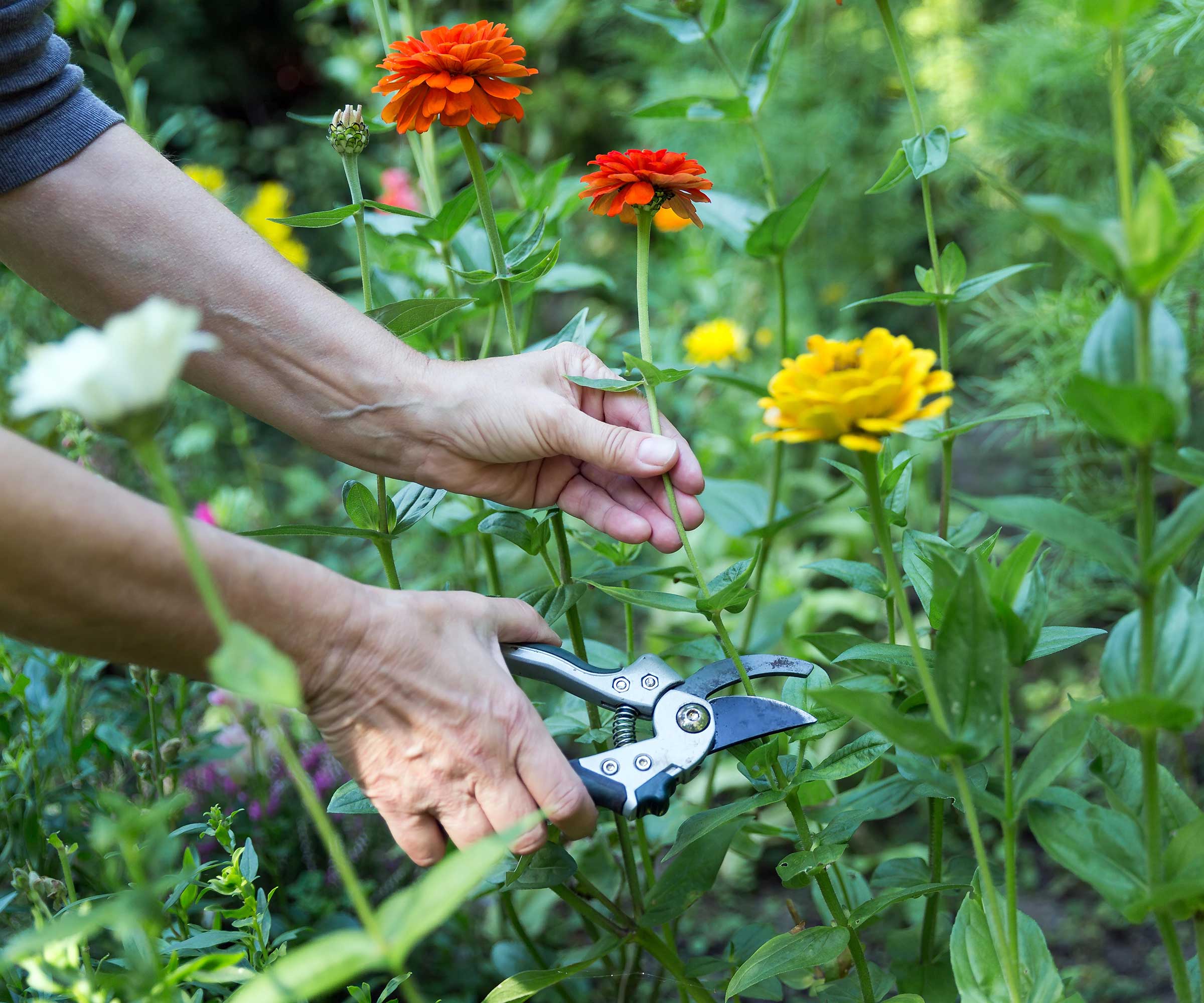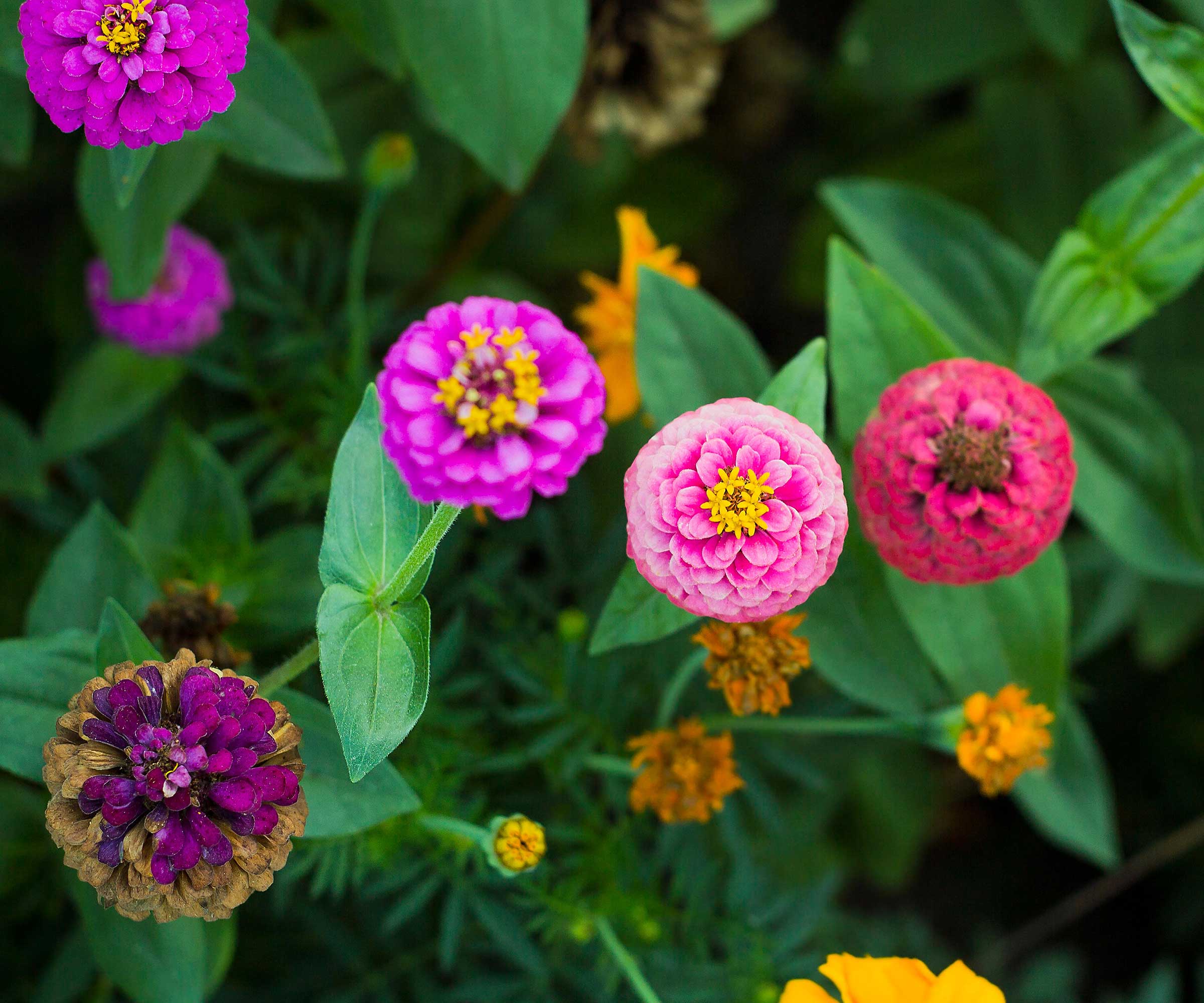These are the secrets to zinnia success – discover how to keep them blooming well into the fall
By following a few simple steps, gardeners can enjoy zinnia flowers up until the first frost


Zinnias are one of the most joyful flowers to grow. Vibrant and cheerful, zinnias will add bold pops of color to your pots and flower beds. For those gardeners, like myself, who follow a maximalist - more is more - approach to color and impact in the garden borders, zinnias are the plant of choice.
Learning how to grow zinnias is fairly straightforward. These easy-to-grow annuals love a full-sun position in the backyard and prefer well-draining soil. If these two requirements are met, within a few weeks you will enjoy bright blooms that will illuminate your flower beds or can be cut and admired in a vase.
With a few simple steps, you can extend the flowering life of your zinnia plants, blooming from spring right up until the first frost. So, if you are seeking long-lasting flower bed ideas for your backyard this year, zinnias are surely the plant to pick, and by following our expert guide, your zinnia floral show will go on and on.

How to keep zinnias blooming
Zinnias are notable as an easy-to-grow flower, looking brilliant in the backyard borders or in a vase indoors. They can be grown as an annual flower in US hardiness zone 3 to US hardiness zones 10 and above, and with the right conditions, zinnias will go on producing flowers until temperatures begin to drop in the fall. Here's what to do if you want months of blooms from these vibrant flowers.
Deadhead zinnias regularly

Knowing how to deadhead zinnias is a simple but important job for any gardener asking how to keep zinnias blooming. 'Regularly removing dead flowers will keep zinnias flowering for longer,' says Gail Pabst, gardening expert and Marketing Director for the National Garden Bureau.
'If faded blooms are left on the plant, these flowers will start to set seed and the plant will stop producing new flowers,' Gail adds.
'The best way to have continued blooms is to deadhead every few days, pinching off spent flowers,' Gail continues. 'Alternatively, you can cut entire flower stems when they are just starting to open and enjoy them indoors in a vase.'
Design expertise in your inbox – from inspiring decorating ideas and beautiful celebrity homes to practical gardening advice and shopping round-ups.
As Gail says, removing faded flowers every few days is recommended, and doing so will prolong the flowering season. You can use your hands, simply pinching out the old flower buds, or, I would typically use secateurs to cut down to a healthy pair of leaves, from where a new flower will shoot.
For those growers who are growing blooms to take indoors, I would recommend investing in a pair of new flower secateurs, such as these available from Walmart.

Gail is a passionate horticulturist with over 25 years' experience in the industry. She is an avid home gardener too and loves to try out the newest varieties and techniques. Gail is the Marketing Director for the National Garden Bureau and her work has helped her to continue their mission of inspiring, teaching and growing in gardening with others.
Fertilize zinnias

'Zinnias are a great option for beginner gardeners as they are low maintenance, and generally bloom for most of the summer,' says plant expert, Katie Sunderlage. 'To help zinnias grow strong and produce healthy blooms, it is recommended to use a water-soluble feed,' such as this Miracle-Gro bloom booster fertilizer from Walmart.
'Fertilizers high in phosphorus can also help to promote strong healthy stems and blooms,' Katie adds. 'I find that water-soluble feeds work the best as they last in the soil and will slowly release nutrients into the plant for a longer period.'
'Most brands and products recommend fertilizing your plants every four weeks, but it is important to read the label and apply it according to the instructions,' Katie says. 'When applying a water-soluble fertilizer, it is best to only water the soil as any water droplets on the leaves can burn in the sun.'
General-purpose organic plant fertilizer is available to buy from Walmart.

Operations Manager at Holland Group, managing the customer service department and purchasing. Katie has been in the green industry since 2005 in the Greater Milwaukee area, earning her degree in Horticulture in 2008. She has been able to share her love for plants working in multiple garden centers, in sales positions and most recently in an online retail platform at Holland Group.
Water zinnias adequately during the growing season

Zinnias can tolerate dry, warm weather, but young plants grown from seed or purchased from garden centers should be watered relatively frequently during the first few weeks after planting.
During the summer, I would suggest keeping an eye on your zinnia plants and touching the soil to monitor for watering requirements. In addition, if zinnia leaves appear wilted or droopy, your plant urgently needs water. It is best to stick to a regular watering schedule, giving your zinnias a soaking at least once a week, or even more during very hot weather.
For gardeners growing zinnias in pots, you will need to water more frequently than those grown in beds and borders. Pots and containers can dry out very quickly, so it is a good idea to water your pots every few days during the summer. When considering when to water plants, I tend to do this in the early morning or last thing at night when temperatures are cool.
FAQs
How often should I deadhead zinnia plants?
With regular deadheading, zinnia blooms can flower through much of the summer months, even until the first frost. I recommend deadheading your annual plants twice a week. By adopting a little and often approach, this task is far more manageable and enjoyable. Using clean, sharp secateurs, carefully remove spent blooms, cutting down to a leaf node or healthy pair of leaves.
With regular deadheading, feeding, and watering, your zinnia blooms will keep producing new blooms, filling your backyard with vibrant and impactful flowers. For more advice on growing annuals, see our guide on how to keep snapdragons flowering for longer, to ensure that your striking snapdragons continue blooming for as long as possible too.

Thomas is a Content Editor within the Gardens Team at Homes and Gardens. He has worked as a professional gardener for both public spaces and private estates, specializing in productive gardening, growing food and flowers. Trained in Horticulture at the Garden Museum, he has written on gardening and garden history for various publications, including The English Garden, Gardens Illustrated, Hortus, The London Gardener and Bloom. He has co-authored a Lonely Planet travel book, The Tree Atlas, due out in 2024.
